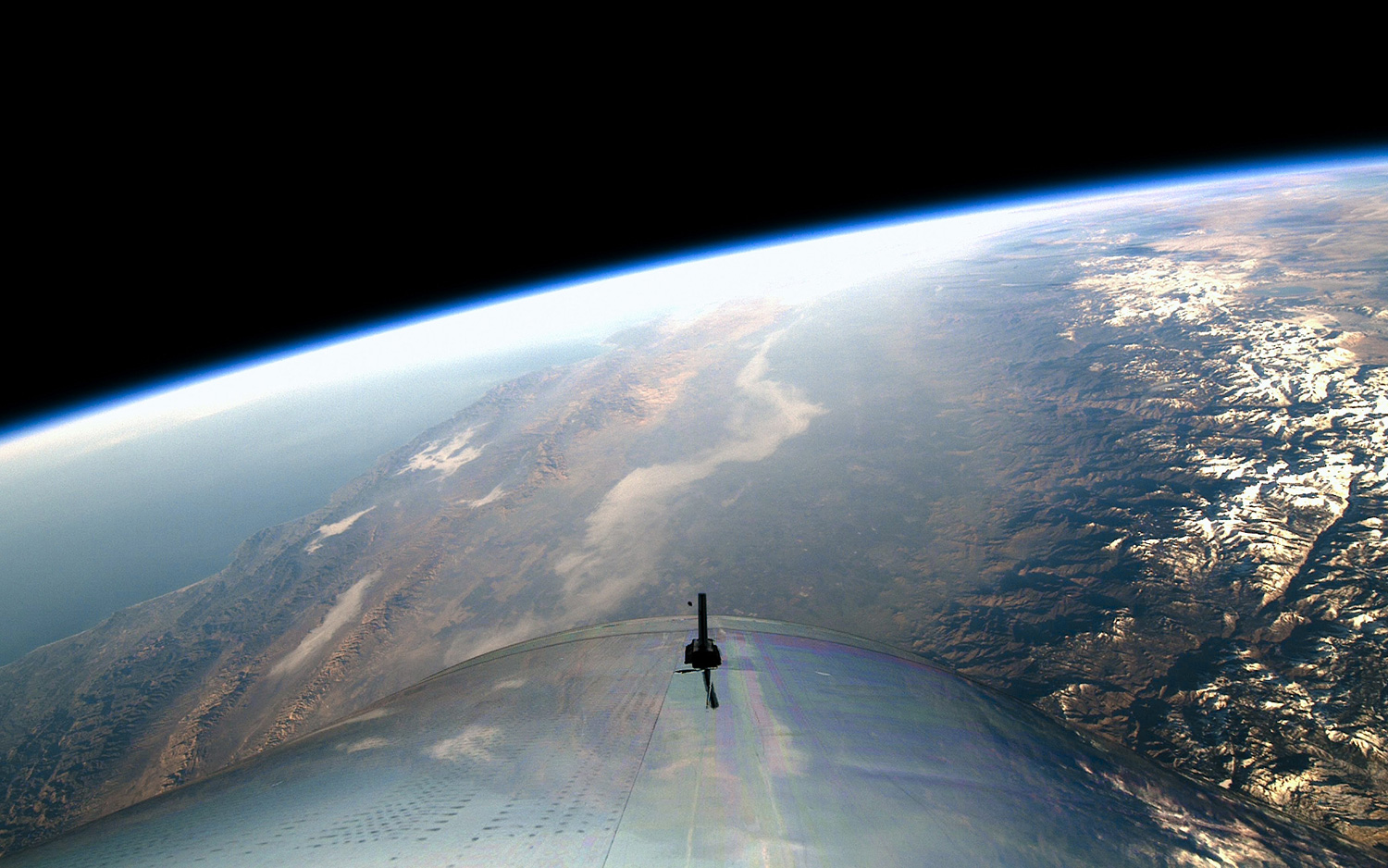Virgin Galactic's SpaceShipTwo Unity 22 launch with Richard Branson. See video and photos of the flight.
A launch webcast hosted by Stephen Colbert begins at 10:30 a.m. EDT (1430 GMT).
Update 12:57 p.m. EDT: Richard Branson and the Unity 22 crew have safely landed back at Spaceport America. Read the full story here.
On July 11, Virgin Galactic made a giant leap toward commercial suborbital spaceflight. The company launched its first fully crewed flight of its SpaceShipTwo space plane Unity with a special passenger on board: the company's billionaire founder Richard Branson.
Branson, three crewmates and two pilots launched on the historic flight after being carried into launch position by Virgin Galactic's carrier plane VMS Eve. They will take off from the company's homeport of Spaceport America in New Mexico, with a live webcast chronicling the flight. Here's everything you need to know about the mission, which Virgin Galactic has dubbed Unity 22.
Related: 'Welcome to the dawn of a new space age,' Branson says
More: Virgin Galactic teams with Omaze to raffle off 2 tickets to space
What time was Virgin's Galactic launch?
Virgin Galactic began webcasting the mission at about 10:30 a.m. EDT (1430 GMT). The crew walked out to the ship about an hour earlier. The mothership VMS EVE is released Unity for launch at 11:20 a.m. EDT/1520 GMT, with landing occurring at 11:35 a.m. EDT/1535 GMT.
It looks like was a fun webcast.
Stephen Colbert, host of The Late Show on CBS, hosted the webcast, with singer Khalid debuting his new single "New Normal" during the launch, former Canadian Space Agency astronaut Chris Hadfield and future Virgin Galactic astronaut Kellie Gerardi, who will launch on a research flight in 2022, offered live commentary along with Virgin Galactic's Veronica McGowan.
Breaking space news, the latest updates on rocket launches, skywatching events and more!
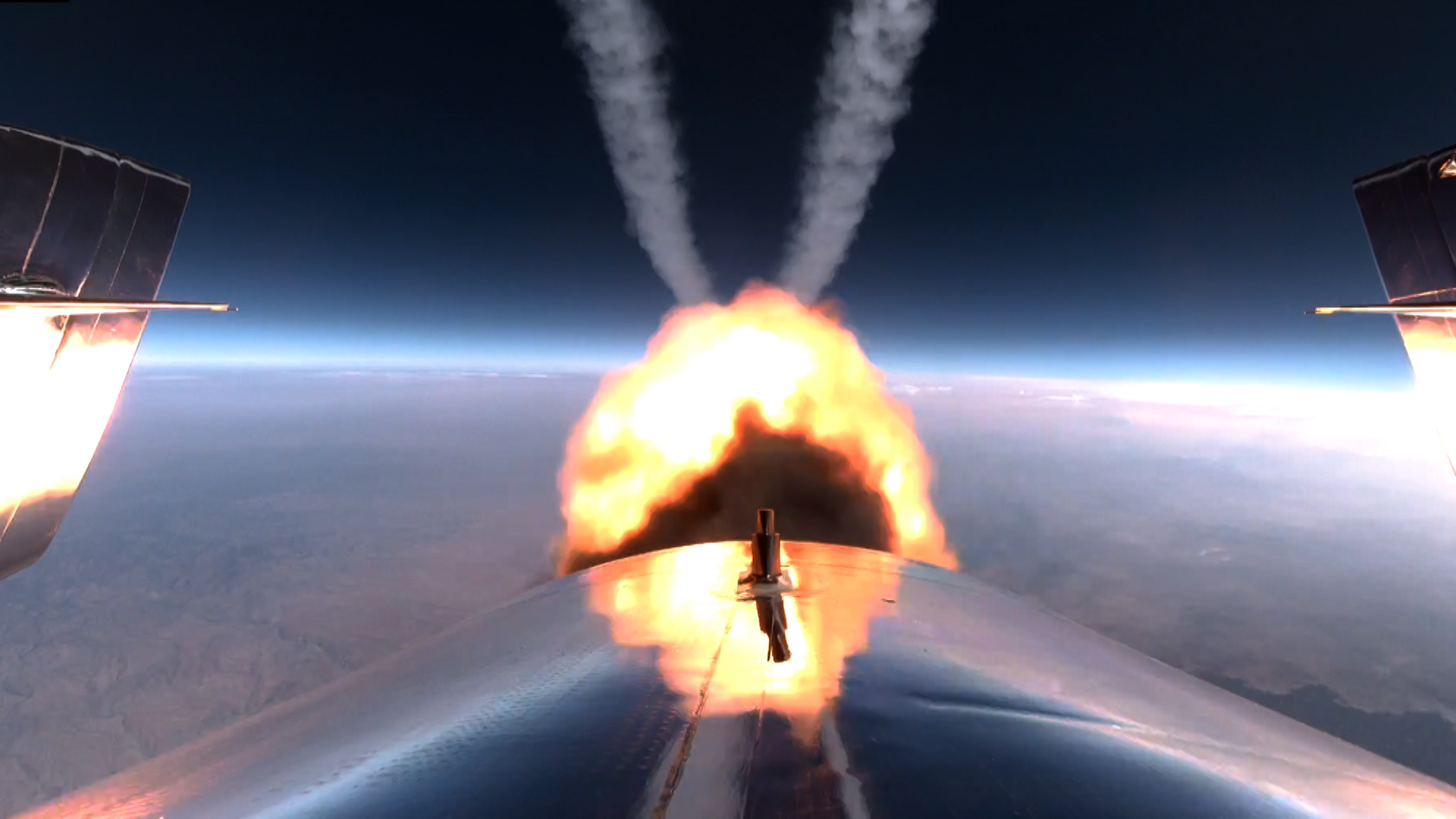



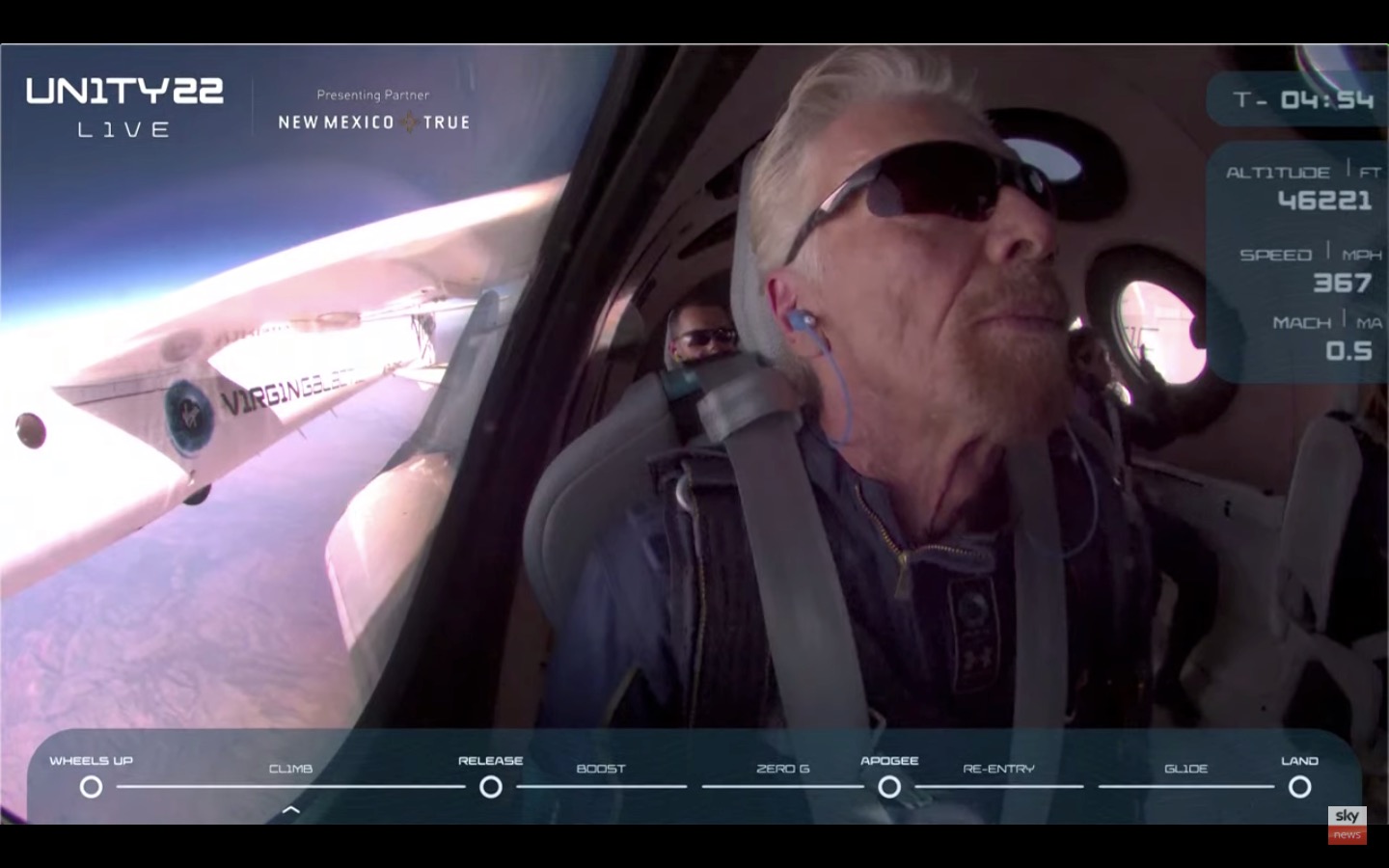
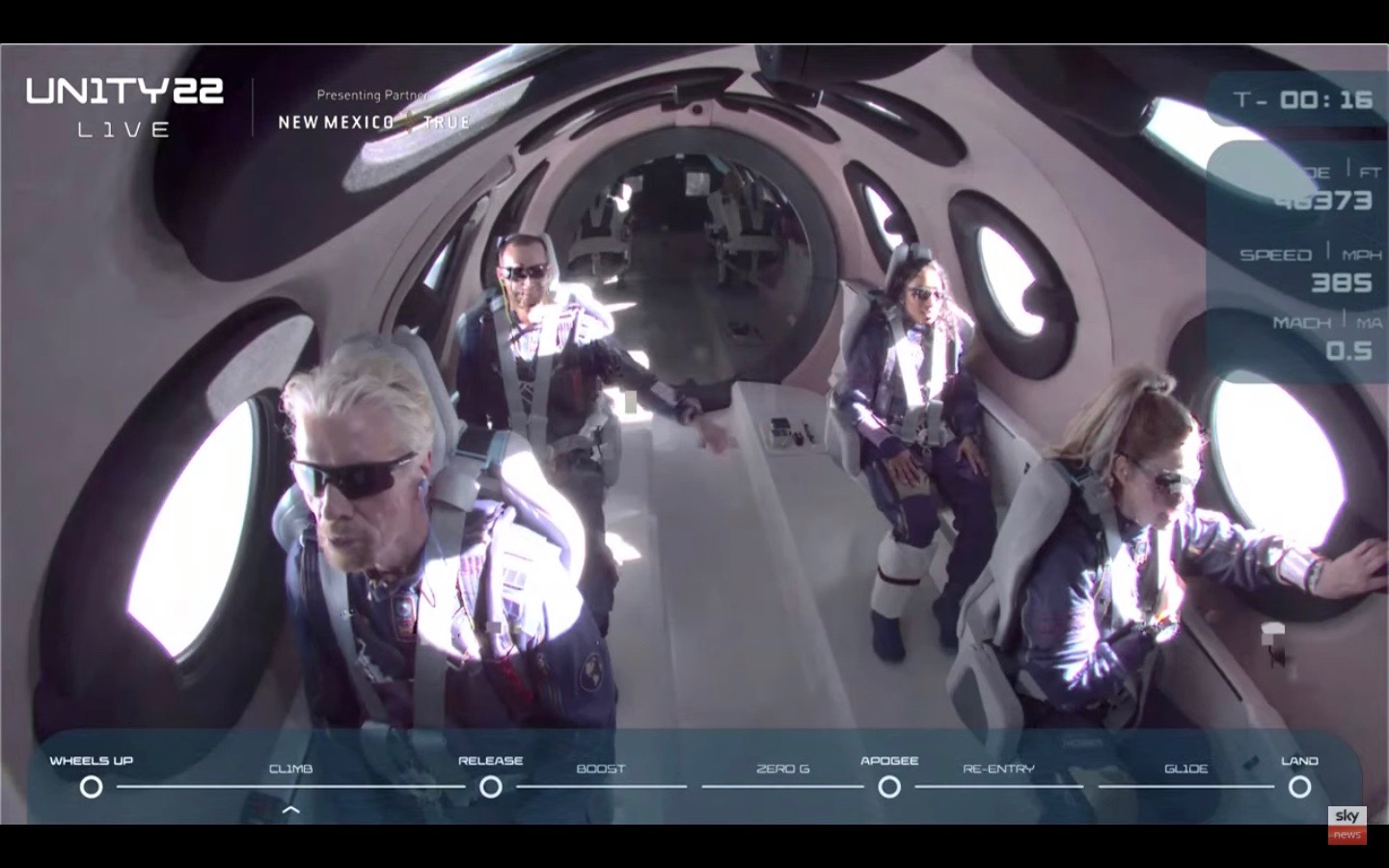
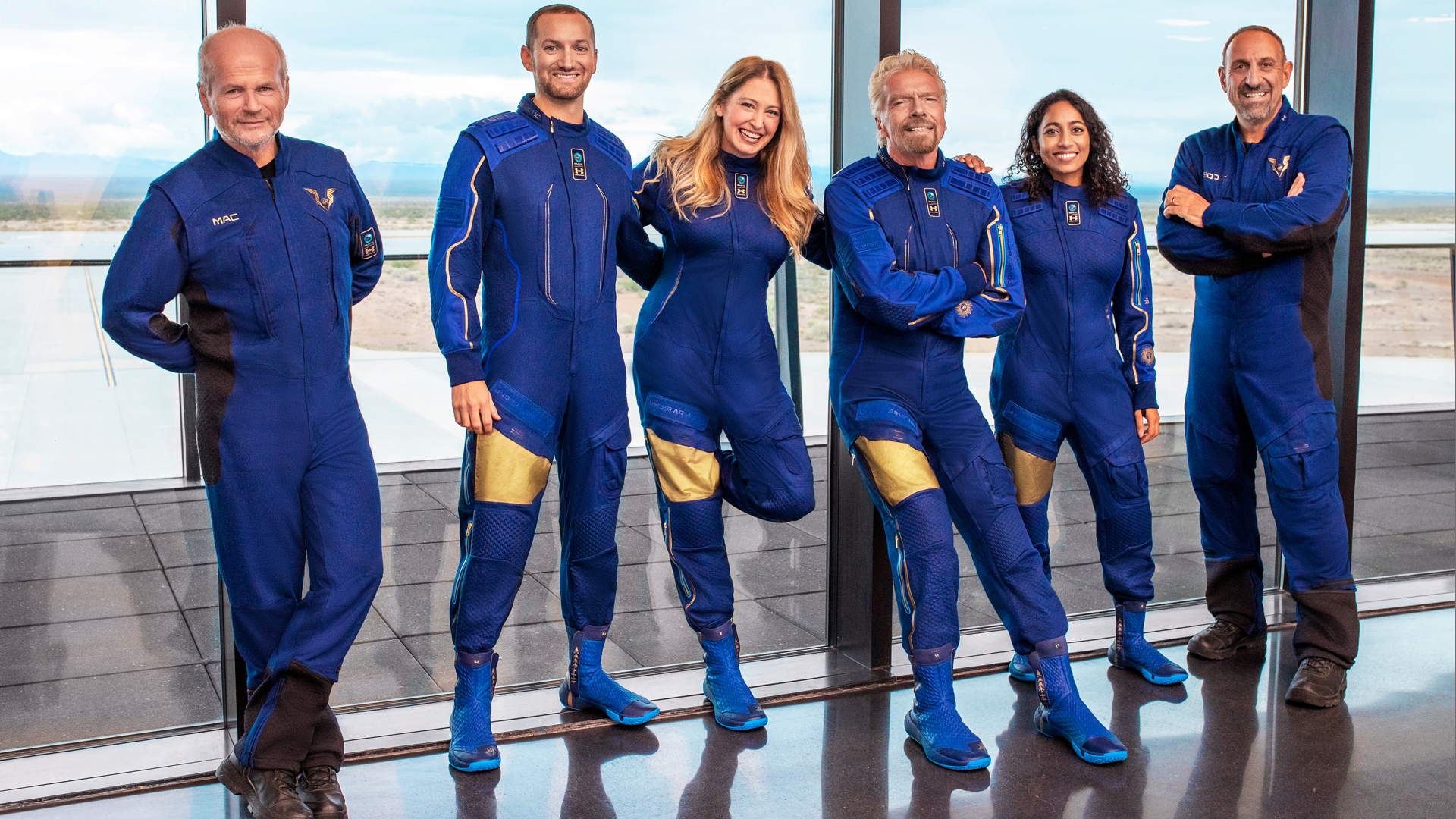
The webcast began with the Unity spacecraft and its carrier plane taking off from its runway at Spaceport America, which is located 55 miles (88 kilometers) north of Las Cruces, New Mexico.
Branson stated that the entire flight will take about 90 minutes, including the ascent up to launch position, release, flight to space and glide back to Earth for a runway landing at Spaceport America.
Virgin Galactic had initially planned to begin its launch webcast at 9 a.m. EDT (1300 GMT), but bad weather delayed the rollout of the VMS EVE and VSS Unity vehicles from their hangar.
Related: How Virgin Galactic's SpaceShipTwo works (infographic)
Who was Virgin Galactic launching on Unity 22?

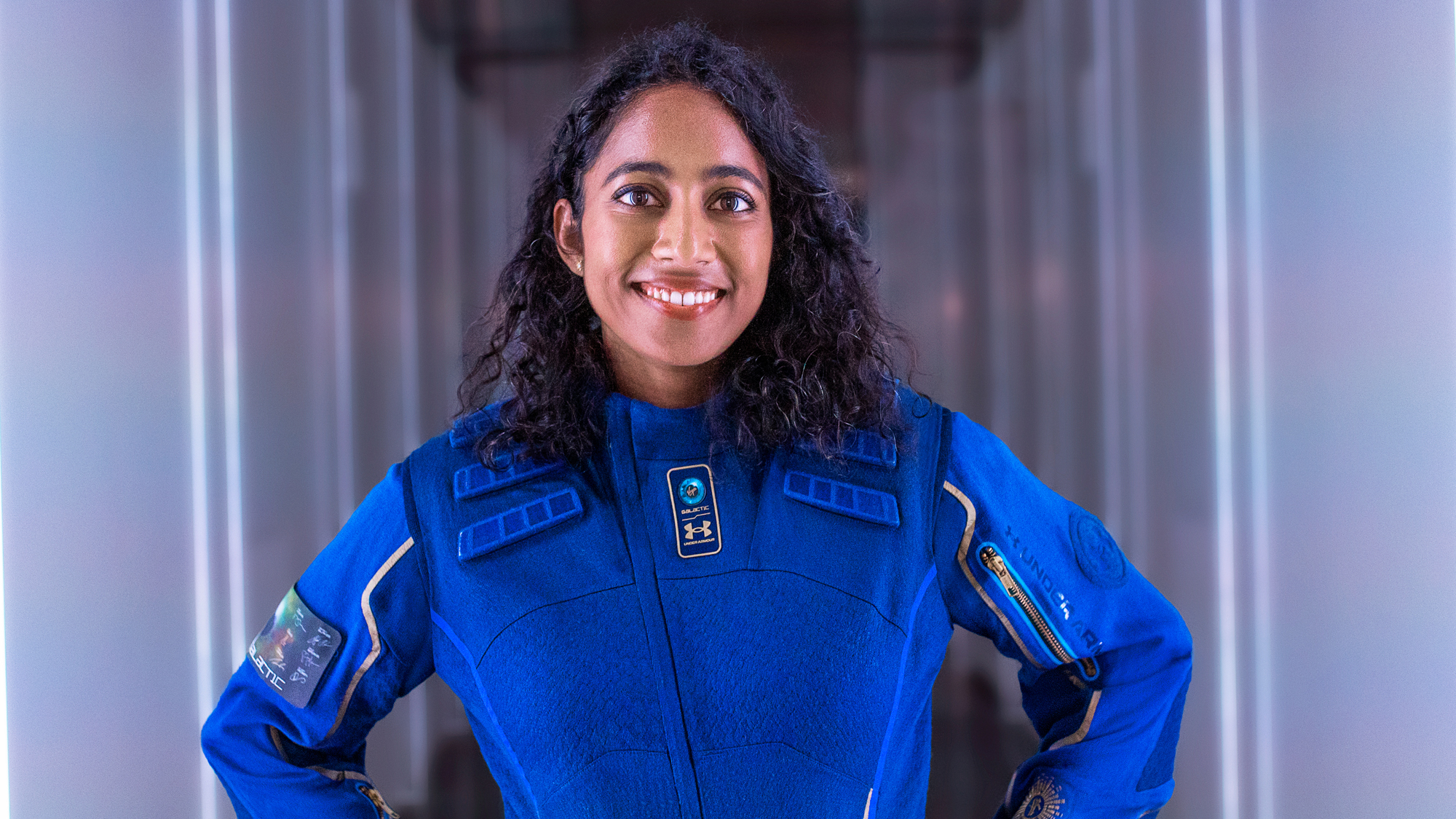
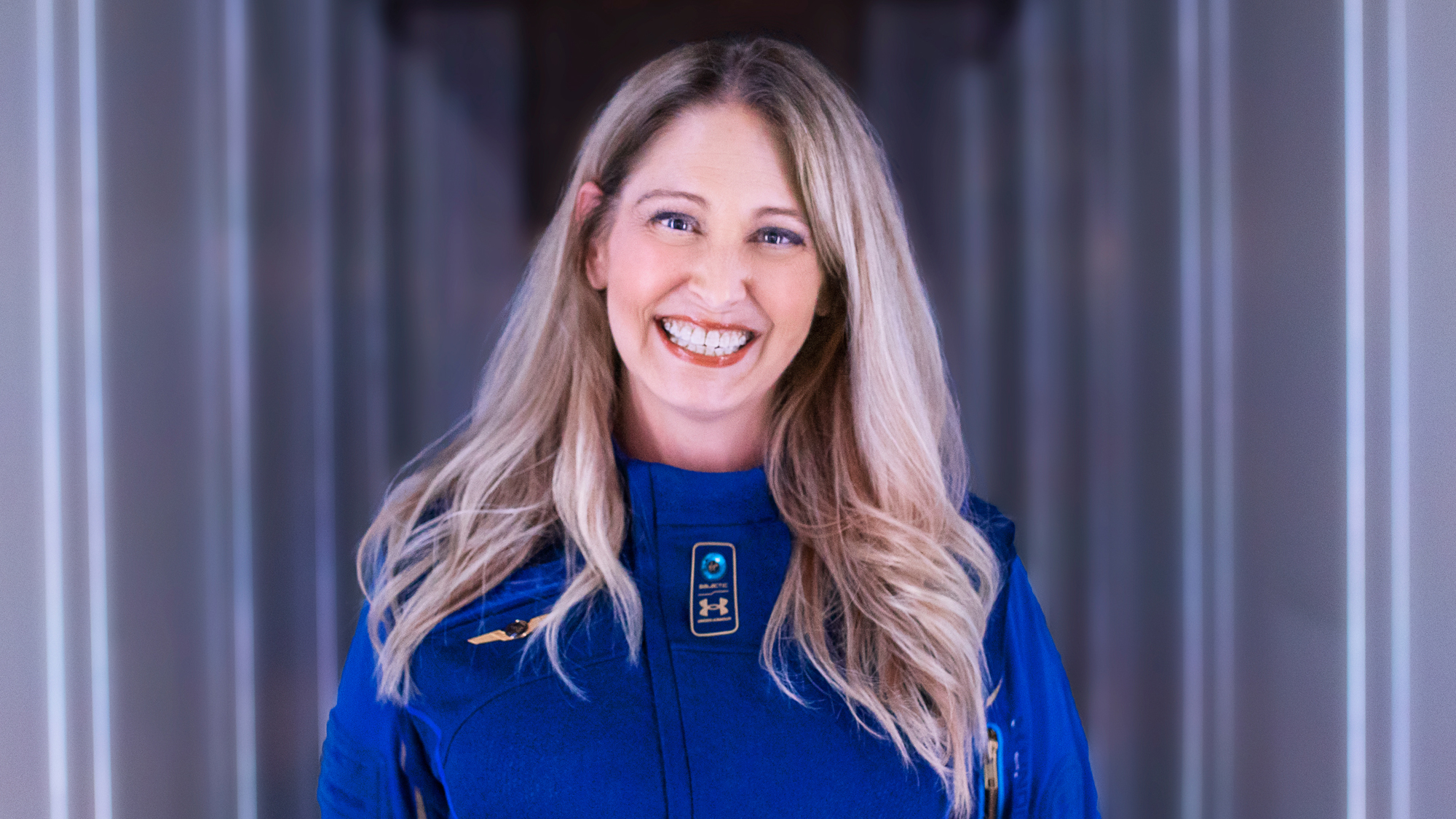
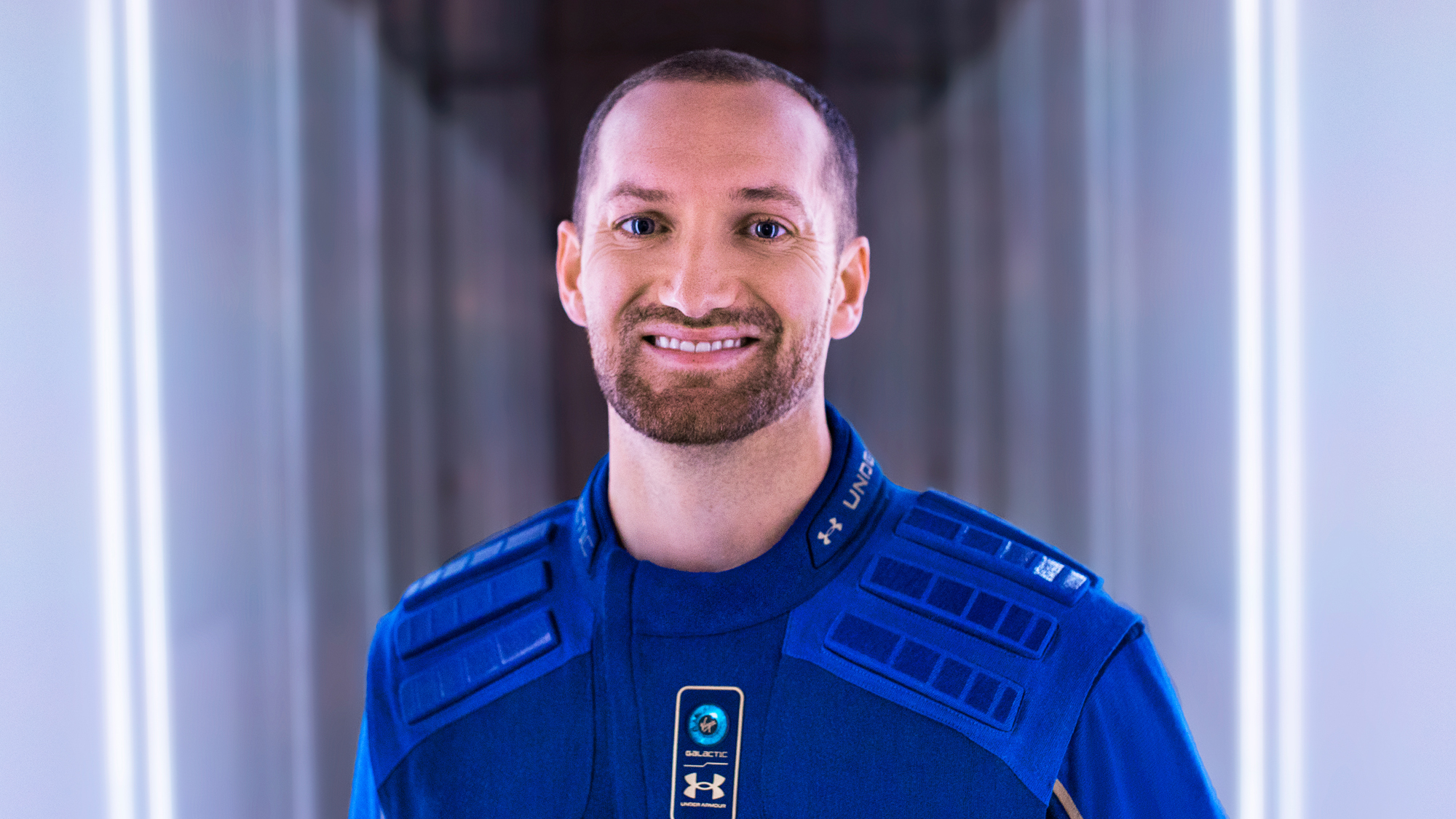


Virgin Galactic launched six people on the Unity 22 flight, although the spacecraft is designed to carry up to eight people (two pilots and six passengers).
Unity 22's crew included four mission specialists:
- Sirisha Bandla, Vice President of Government Affairs and Research Operations at Virgin Galactic. She will evaluate the human-tended research experience via an experiment from the University of Florida that requires several handheld fixation tubes to be activated at various points in the flight profile.
- Colin Bennett, Lead Operations Engineer at Virgin Galactic. He will evaluate cabin equipment, procedures and the experience during the boost phase and weightless environment inside Unity.
- Sir Richard Branson, founder of Virgin Galactic. Branson will evaluate the private astronaut experience. He will receive the same training, preparation and flight as Virgin Galactic's future ticket-buying astronauts and use the flight to fine ways to enhance the experience for customers.
- Beth Moses, Chief Astronaut Instructor at Virgin Galactic. She will serve as cabin lead and test director in space. Her tasks include overseeing the safe execution of the test flight objectives. Moses has launched on Unity before.
Related: Meet the crew launching on Virgin Galactic's 1st fully crewed flight
Two veteran Virgin Galactic pilots were at the helm of Unity during the launch. They have both launched to space on Unity before and are:
- Dave Mackay: Mackay is Virgin Galactic's chief pilot and grew up in the highlands of Scotland. He is a former Royal Air Force pilot and flew for Branson's airline company Virgin Atlantic before joining Virgin Galactic.
- Michael Masucci: Michael "Sooch" Masucci is a retired U.S. Air Force colonel who joined Virgin Galactic in 2013 who racked up over 9,000 flying hours in 70 different types of airplanes and gliders during more than 30 years of civilian and military flight.
Two other pilots will fly the VMS EVE carrier plane that will carry SpaceShipTwo into launch altitude. They are:
- Frederick "CJ" Sturckow: A former NASA space shuttle commander who joined Virgin Galactic in 2013 with Masucci. A retired Marine Corps colonel, he was the first NASA astronaut to join the company and flew four space shuttle missions.
- Kelly Latimer: Latimer is a test pilot and retired lieutenant colonel in the U.S. Air Force who joined Virgin Galactic's pilot corps in 2015. She was the first female research test pilot to join what is now NASA's Armstrong Flight Research Center.
What was Virgin Galactic's mission for Unity 22?
The primary objective for Unity 22 is to serve as a test flight for future passenger flights by Virgin Galactic. As its number suggests, this was the 22nd flight of Unity, but only its fourth launch to space.
The four mission specialists each evaluated different experiences that Virgin Galactic has promised its future customers, many of whom have already reserved trips to space with the company at $250,000 a seat.
Bandla, for example, tested the experience of performing experiments aboard Unity during different phases of the flight, including the weightless period. Branson took note of the flight as a paying passenger to look for ways to enhance the trip for ticket holders looking for the experience of a lifetime.
Related: The long road to spaceflight for Virgin Galactic and Blue Origin
Moses is Virgin Galactic's Chief Astronaut Trainer and ensured everyone is safe in their tests while Bennet examined Unity's cabin performance to look for potential enhancements.
This mission is a critical flight or Virgin Galactic, which Branson founded in 2004. VSS Unity is the company's second SpaceShipTwo after the first, VSS Enterprise, broke apart during a 2014 test flight, killing one pilot and seriously injuring another. Virgin Galactic has made numerous safety upgrades to prevent such an accident from happening again.
What didVirgin Galactic's astronauts experience?
The mission began with takeoff from Spaceport America, where Virgin Galactic has built its "Gateway to Space" terminal to serve its future customers. They'll wore custom Under Armour flight suits made for Virgin Galactic.
After takeoff, the carrier plane VMS EVE hauled the SpaceShipTwo VSS Unity (short for Virgin Space Ship) to an altitude of about 50,000 feet (15,000 meters), when it dropped the spacecraft.
In Photos: Virgin Galactic's Sleek Under Armour Spacesuits for Space Tourists
After separation, Unity ignited its hybrid rocket motor, which uses a mixture of solid and liquid propellant, to begin the boost phase. This carried Unity to its target altitude of 53 miles (86 km), where the pilots and crew experienced 4 minutes of weightlessness. They exited their seats and enjoy sweeping views of the Earth below through the many round windows that dot the space plane's fuselage.
After that short encounter with weightlessness, the crew will climb back into their seats as Unity prepares to return to Earth. Pilots Mackay and Masucci "feathered" the spacecraft's twin tail booms to provide stability during atmospheric reentry.
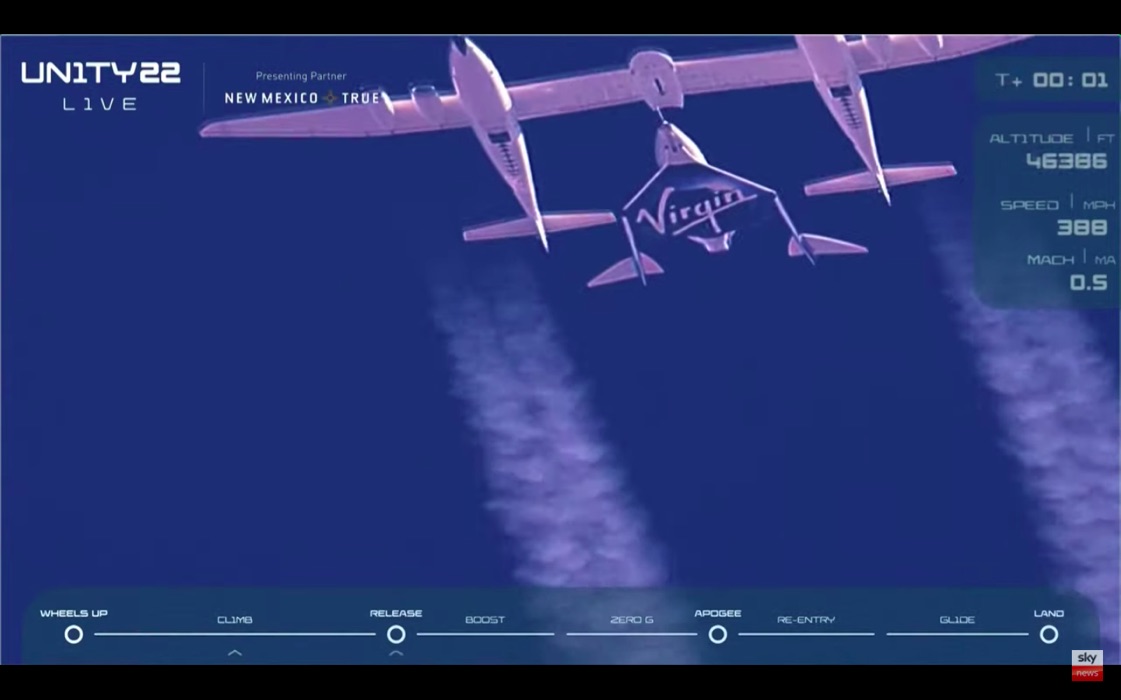

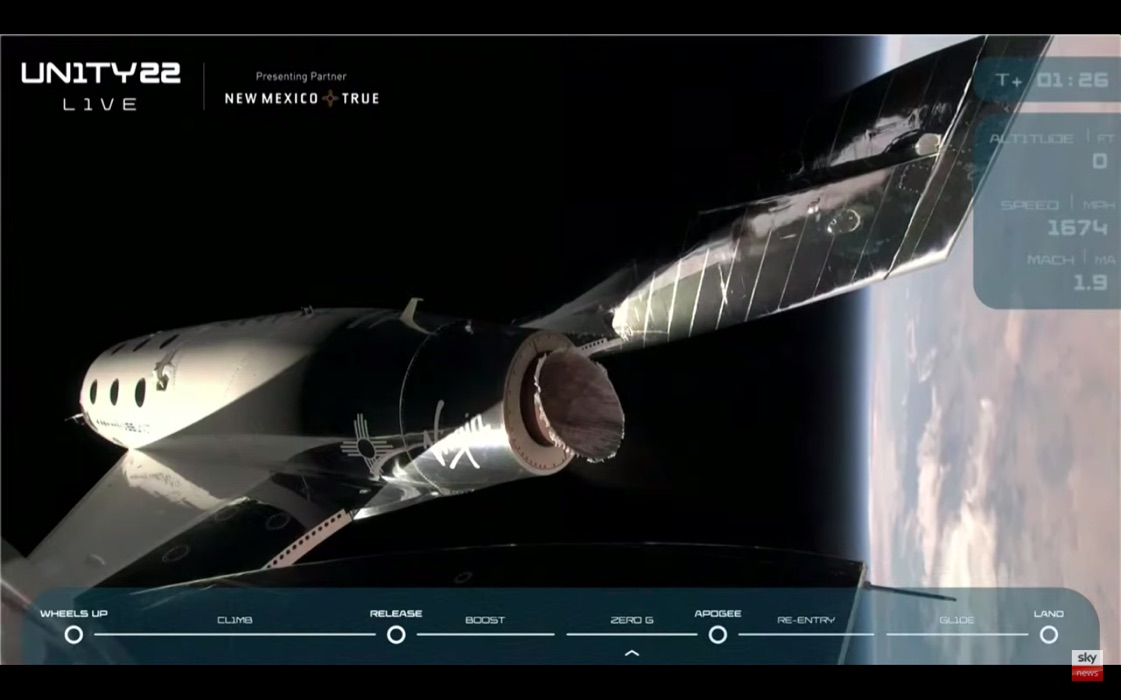

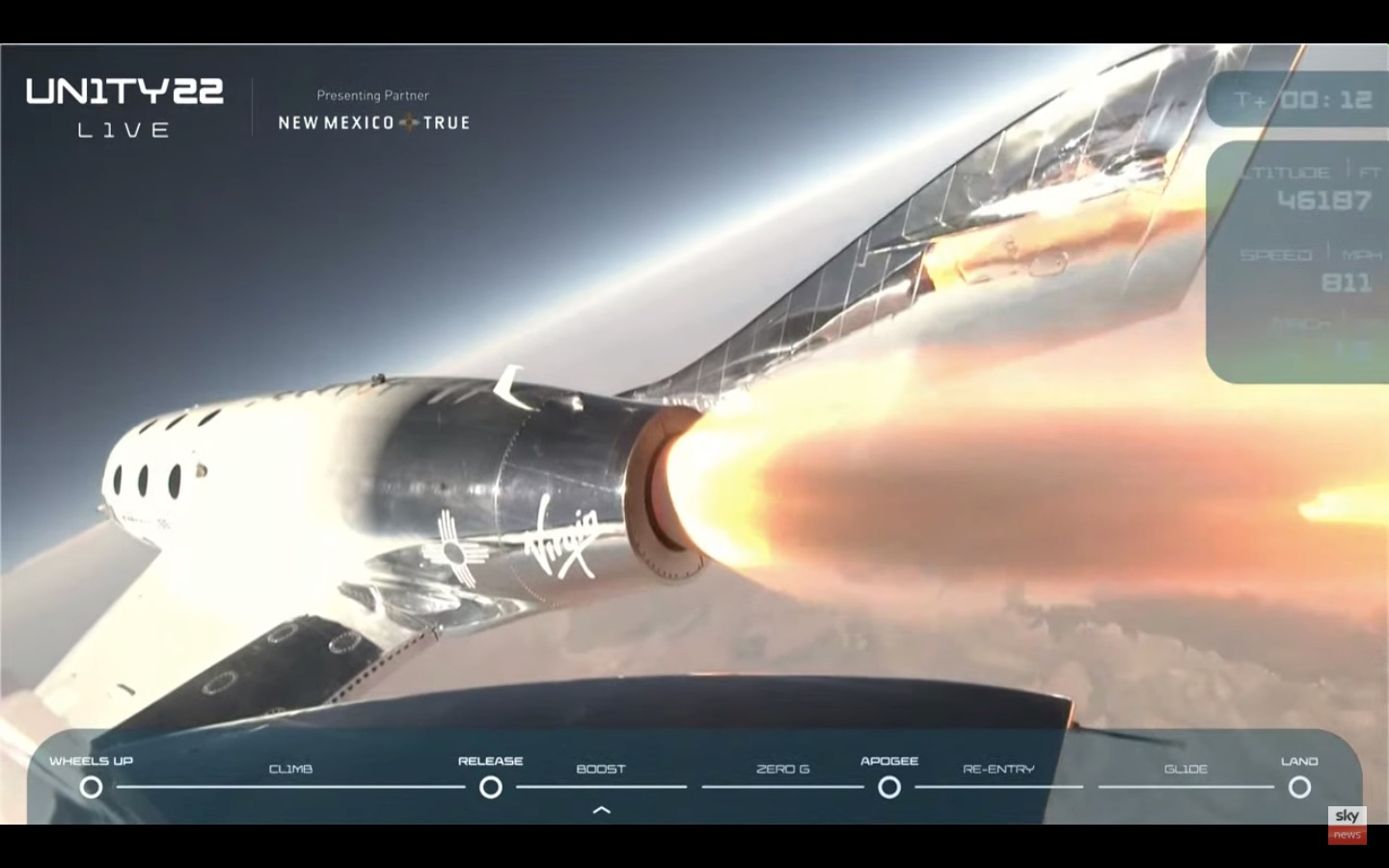

The feathered tail was then locked back into place for the glide back to Earth, which will end with a runway landing at Spaceport America. The entire flight, from takeoff to landing, should last about 90 minutes, Branson has said.
Will Virgin Galactic really reach space with Unity 22?
Virgin Galactic launch Unity to an altitude above 50 miles (80 km), which NASA, the Federal Aviation Administration and the U.S. military classify as space. They will earn astronaut wings for reaching that height.
Another widely recognized boundary of space, the Kármán line, is at an altitude at 62 miles (100 km) above Earth. The SpaceShipTwo VSS Unity won't reach this milestone, which has led Virgin Galactic's competitor Blue Origin (which does fly higher than 62 miles) to call out Virgin Galactic for missing that mark.
Richard Branson has downplayed that criticism and saying that "the actual difference in experience is going to be almost non-existent," in an interview with NPR's Leila Fadel.
Where does Virgin Galactic launch SpaceShipTwo from?
Virgin Galactic initially launched SpaceShipTwo test flights from the company's facilities at Mojave Air and Space Port in California. However, in 2020 the company moved Unity and its carrier craft to its permanent home at Spaceport America, where it plans to fly regular passenger flights beginning in 2022.
Spaceport America is located near Las Cruces, New Mexico and is home to Virgin Galactic's "Gateway to Space" terminal, a welcome center and waiting room for ticketed passengers preparing for trips to space. It also sports a large hangar designed to fit multiple SpaceShipTwo spaceplanes and the VMS Eve. Virgin Galactic has also built a new vehicle, the SpaceShip III VSS Imagine.
When could I launch to space with Virgin Galactic?
If you booked a trip with Virgin Galactic early and have one of the first reservations, you may get your chance to fly in space as early as 2022. If not, there's a long wait ahead. And that's assuming you can afford the $250,000 ticket price.
Virgin Galactic has said it plans to begin passenger launches in 2022 after a series of final test flights in 2021. The company does have hundreds of reservations for customer flights in backlog from eager would-be astronauts that have been waiting for over 17 years (since Richard Branson first announced Virgin Galactic in 2004) for the SpaceShipTwo to finally fly. The company paused taking new reservations after the 2014 accident.
Virgin Galactic is expected to resume taking reservations for "a limited number of tickets for future spaceflights" sometime this year, according to its website.
Email Tariq Malik at tmalik@space.com or follow him @tariqjmalik. Follow us @Spacedotcom, Facebook and Instagram.

Tariq is the award-winning Editor-in-Chief of Space.com and joined the team in 2001. He covers human spaceflight, as well as skywatching and entertainment. He became Space.com's Editor-in-Chief in 2019. Before joining Space.com, Tariq was a staff reporter for The Los Angeles Times covering education and city beats in La Habra, Fullerton and Huntington Beach. He's a recipient of the 2022 Harry Kolcum Award for excellence in space reporting and the 2025 Space Pioneer Award from the National Space Society. He is an Eagle Scout and Space Camp alum with journalism degrees from the USC and NYU. You can find Tariq at Space.com and as the co-host to the This Week In Space podcast on the TWiT network. To see his latest project, you can follow Tariq on Twitter @tariqjmalik.
